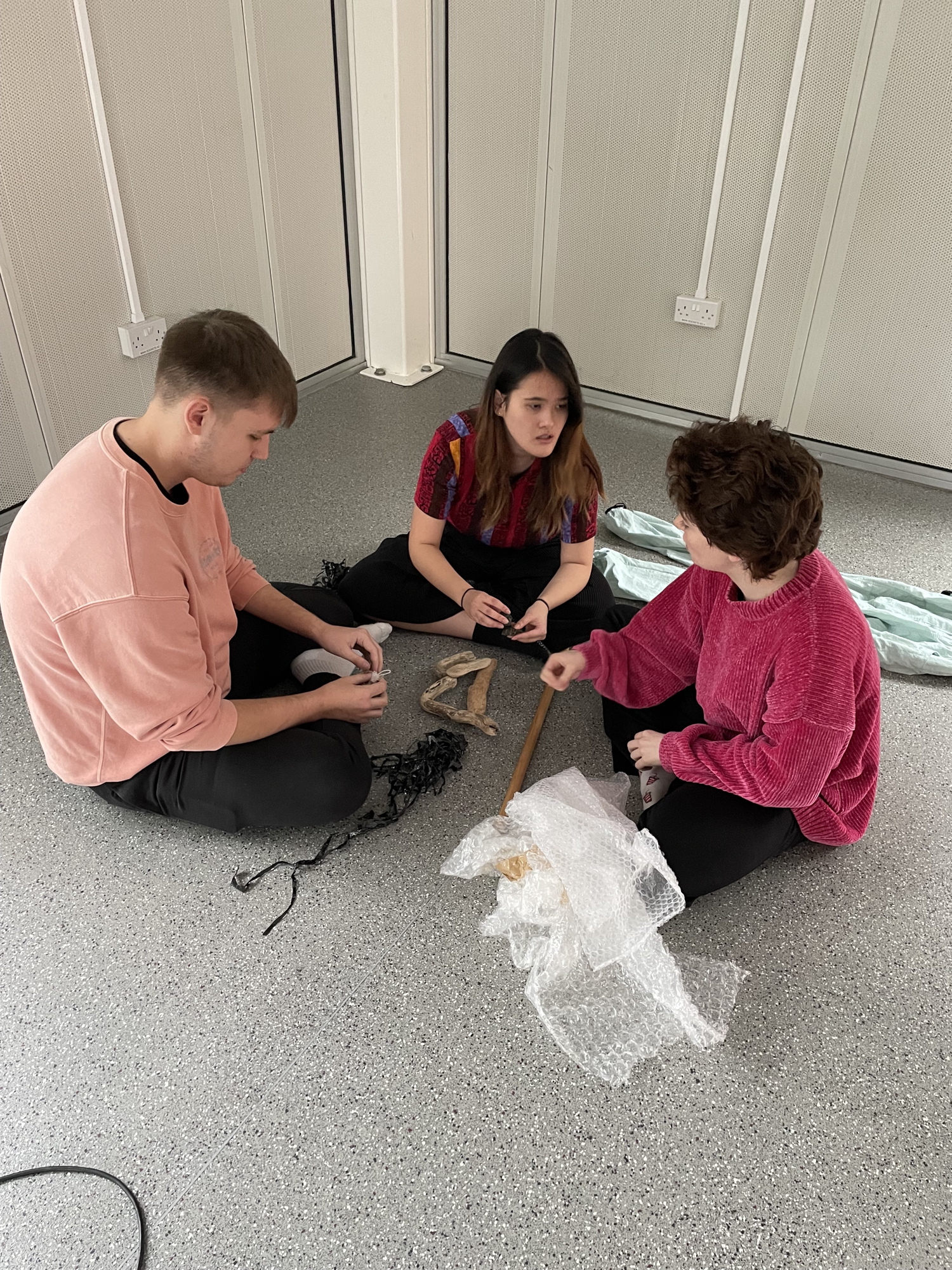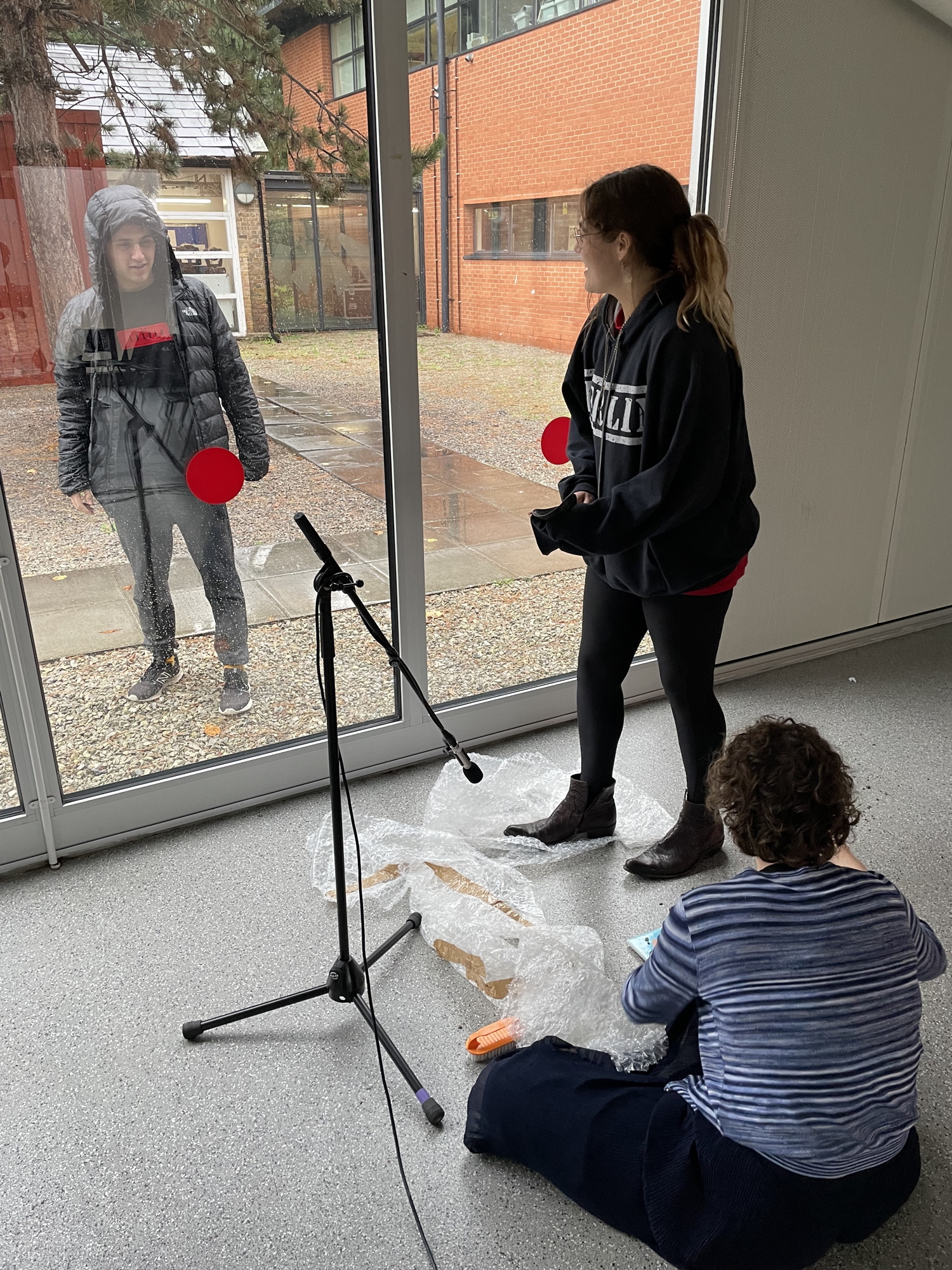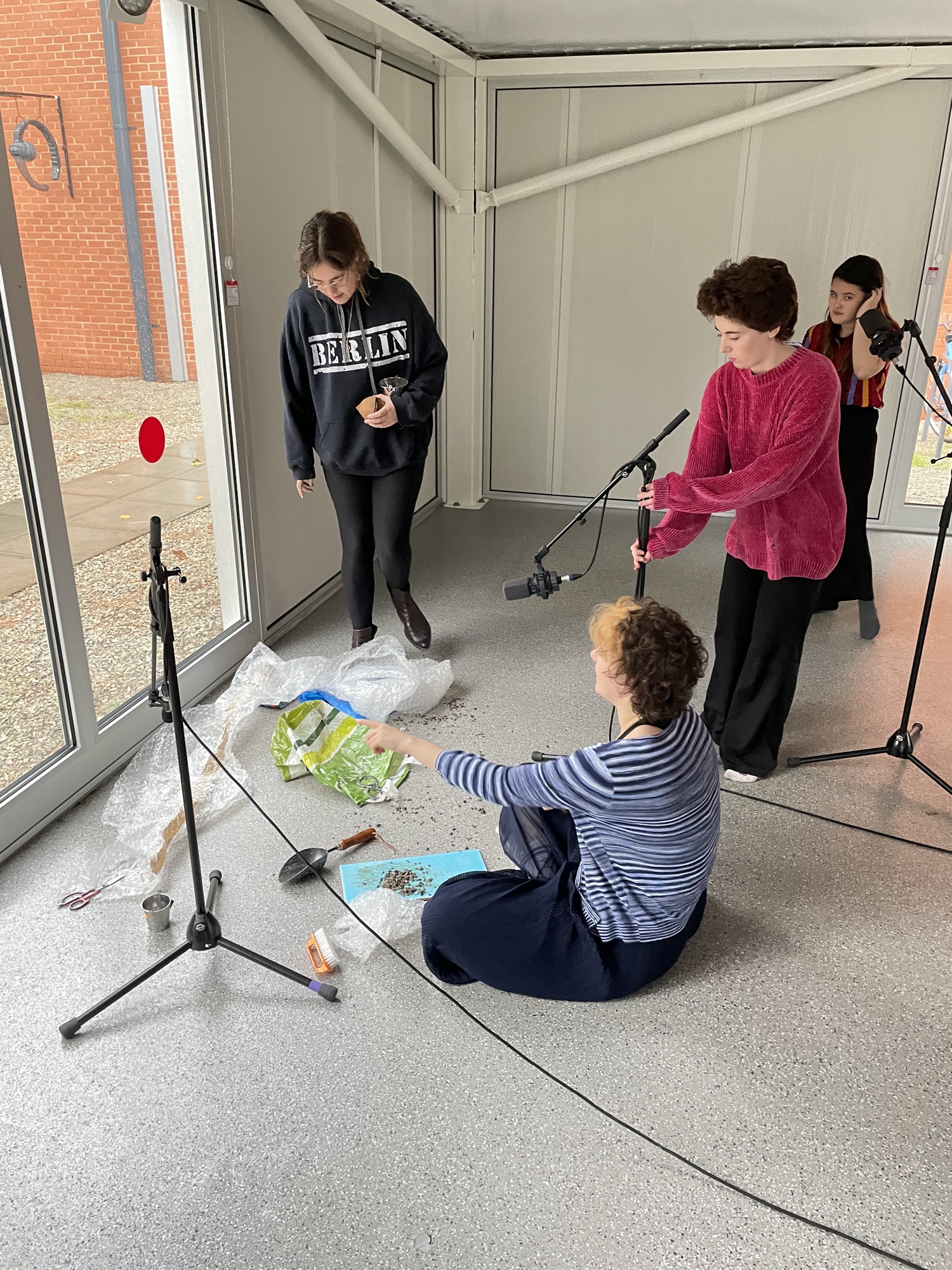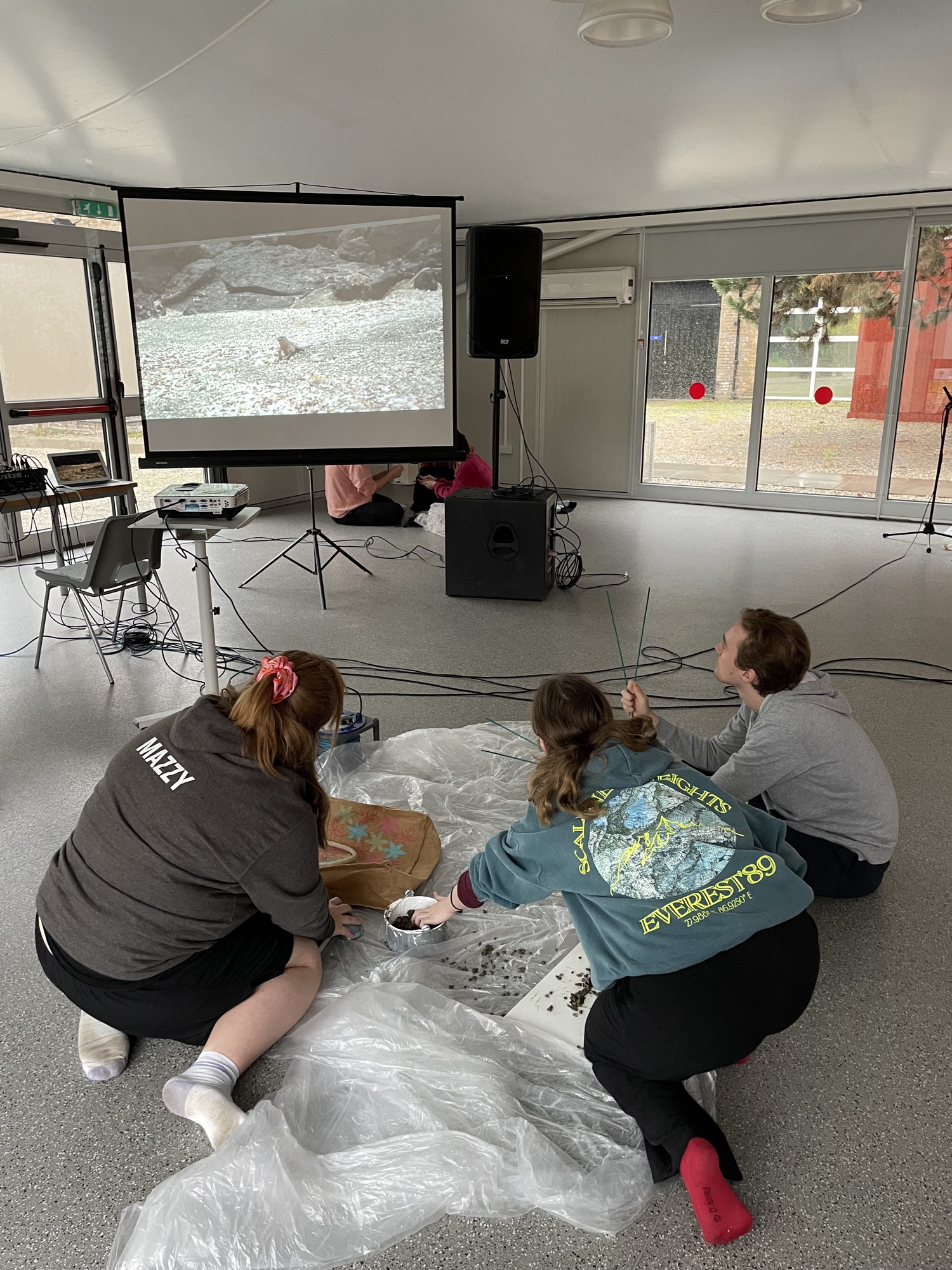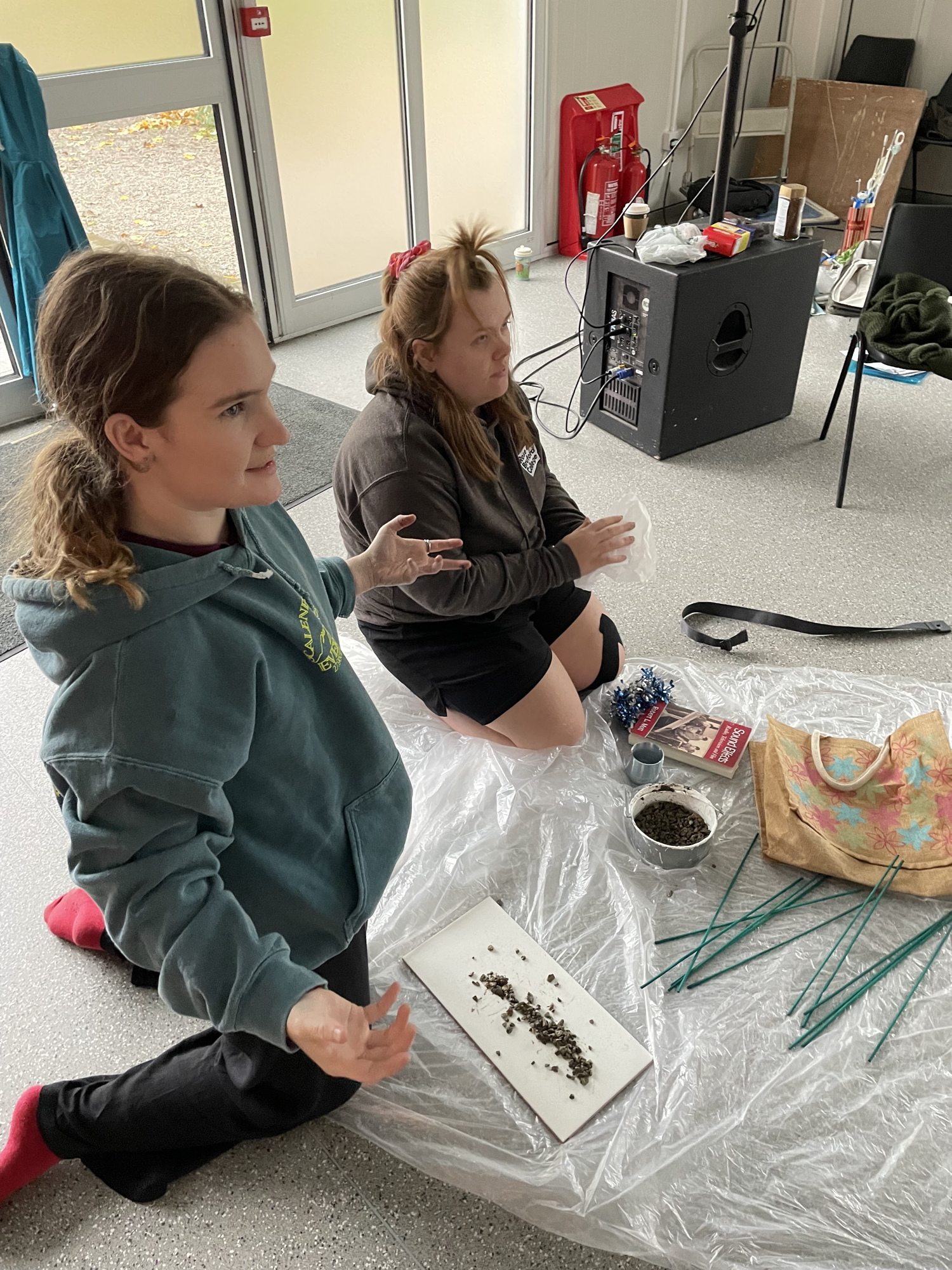Aims[edit]
The workshop aims to:
- Introduce students to the history of Foley effects in film and theatre
- Give students an understanding of the types of sound used in film
- Enable students to use Foley sound in their theatre and media productions
- Develop students’ skills in using microphones, mixers and effects processors
- Increase students’ awareness of sound in everyday life
Key Information[edit]
| Number of learners | 12-16 maximum, working in groups of 3-4. |
| Number of staff | 1 teacher. A sound technician to support the workshop will be useful if the teacher and students don’t have technical sound skills. |
| ECTS Credits (if applicable) | Not applicable. |
Learning process[edit]
| Lecture/seminar | Lecture, presentation, discussion (face-to-face or online) | |
| Making project | Making a model, mock-up, plan or design (physical or digital) | |
| X | Performance project | Making a performance or demonstration (live or mediated) |
| Records and Archives | Interviews, photographs and videos of artefacts, annotating archives, creating learning materials (physical or digital) | |
| X | Independent study | Reading, researching, analysing and evaluating learning materials (physical or digital) in groups or alone |
Type of learner[edit]
| X | Student of technical theatre |
| Student of theatre design, architecture | |
| X | Student of theatre arts |
| X | Professional |
| X | Researcher |
| X | General public |
What You Will Need[edit]
Duration and schedule[edit]
Teacher preparation: 4-8 hours Student preparation: none Workshop duration: 3-6 hours
Room or type of space[edit]
A classroom or studio. If working in several sub-groups of 3-4 students, it is helpful if the room is big enough for people to spread out. A group of 16 needs a room of 100m2 minimum.
The room should be a quiet space, without outside sound interference.
Equipment[edit]
A projector or screen to show video/images
Each group needs a sound system with:
- Microphones and stands – at least one and preferably two
- A mixer with amp and speakers
- An effects unit to provide reverb, delay, etc.
Materials (consumables)[edit]
A variety of props to make noises:
- metallic objects
- things that squeak
- cellophane
- bubblewrap
- leaves
- fabric
- fruit
- sand, gravel, pebbles
- custard powder
- water (in large tubs, on a trolley so it can be moved)
Work with whatever is available – the workshop can be flexible. Use your imagination!
Learning resources (books, websites)[edit]
Gareth Fry, Sound Design for the Stage, the Crowood Press Ltd, 2019
Vanessa Theme Ament, The Foley Grail: The Art of Performing Sound for Film, Games, and Animation, Routledge, 2022
David Sonnenschein, Sound Design: The Expressive Power of Music, Voice and Sound Effects in Cinema, Michael Wiese Productions, 2001
Robert L. Mott, Sound Effects: Radio, Television and Film, McFarland & Co., 2014
Video showing in split-screen Foley artists and the film action: https://www.youtube.com/watch?v=OONaPcZ4EAs
Excerpts from films
Process[edit]
Preparation[edit]
- Gather the materials
- Set up the equipment
- Prepare a text to work on, with copies for the students
- Prepare an introductory talk with examples
The learning activity[edit]
3-6 hours, depending on the experience of the students and how far you want to develop the practical aspect of the workshop.
Ice breaker – ask the students to say what their favourite sound is. This starts them thinking about the specificity of sound.
Give an introductory talk, covering:
- Jack Foley – who he was and who he worked with, as an introduction to the start of sound in the cinema
- The evolution of sound since then
- The components of film sound: dialogue, music, atmos, special effects, Foley
- Foley – why is it still needed?
- Sync – being in sync with the action
- Diagetic and non-diagetic sound
- How Foley sound is done
Use clips from a selection of films (Spielberg and others) to illustrate the use of sound. This could include:
- a clip showing sound perspective (close and distant sounds)
- the use of Foley to augment the sound of props being handled by actors, giving information about the state of mind of the character
- a sequence which contains only Foley sound, so you can discuss the directorial choice to use only Foley, and explore the subjective nature of sound.
Following the talk, invite students to listen to the sounds of the room – what sounds can be heard, how far can hearing reach? Ask them to consider what sounds could be emphasised to change the atmosphere in the room?
You are now ready to begin the practical workshop:
Exercise 1[edit]
Working in groups of 3-4, students use the provided materials to make the sound of a campfire (cellophane, bubble wrap, fabric, blowing into mic – a quartet). After experimenting and practicing, each group demonstrates their approach to the other groups, which is followed by a discussion.
Ask students to listen in different ways: - While watching the Foley artists at work - With closed eyes - While watching a video clip of a campfire, played with the sound off.
This process demonstrates how Foley sound relies on the combination of visual and aural perception to create a unified experience.
Exercise 2[edit]
Working in groups, 2 or 3 students create Foley sound to match the actions of another student, such as walking (on different surfaces such as snow), picking something up, moving a chair, opening a door, and so on. Focus on the synchronisation of the sound with the action.
Try with and without reverb and other effects – explore the impact effects can have on story-telling, atmosphere, etc. For this exercise, it helps to have someone on the mixing desk who has technical knowledge to manipulate the sound in real time – a technically capable student or a sound technician.
Exercise 3[edit]
Create Foley sound to accompany a video clip of wildlife. Choose a clip with a calm sequence and some action, such as an animal hunting.
Exercise 4[edit]
Working in groups of 3-4, one student reads a poetic text, acting as a narrator, while the other students work with Foley sounds and effects (reverb and so on) to make an appropriate soundscape.
Assessment and feedback[edit]
This workshop is not designed to be formally assessed. You can give feedback throughout the workshop, and students will want to ask questions and discuss the results during the practical exercises.
At the end of the session, summarise the key points of learning.
Our Experience[edit]
Tips[edit]
Make sure you are familiar with the mixing desk and the effects available, so students are able to transform the sounds they are creating.
It is important to work in a quiet room.
Use sensitive microphones that can pick up quiet sounds.
Allow enough time for the practical work, to give time for students to explore and rehearse before demonstrating their work. This part of the workshop can be extended or reduced, according to the speed the students work at, and the time available.
Additional information and resources[edit]
Photos and video files of students of BA European Theatre Arts at Rose Bruford College in a workshop with Tom Espiner.
Play the video files to hear the sounds being created.
Exercise 1 - Foley sound for a video clip of a camp fire
Video: File:IO4 19 Foley Sound Workshop 09.mp4
Exercise 2 - Foley sound for another person's actions
Video: File:IO4 19 Foley Sound Workshop 06.mp4
Exercise 3 - Foley sound to accompany a wildlife clip
Video: File:IO4 19 Foley Sound Workshop 09.mp4
Credits[edit]
| This learning method was made by: | Tom Espiner (tdespiner@yahoo.co.uk, https://soundandfury.co.uk) |
| Institution: | Rose Bruford College of Theatre and Performance |
